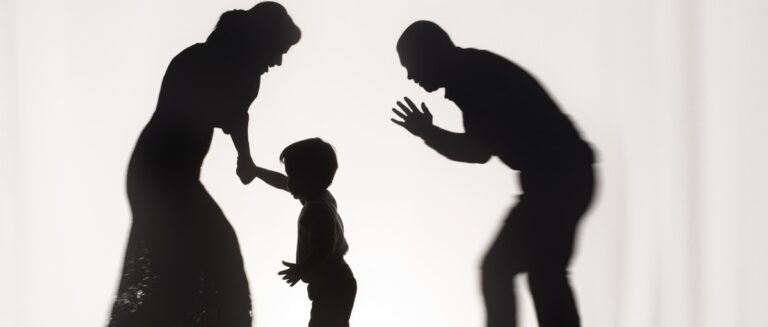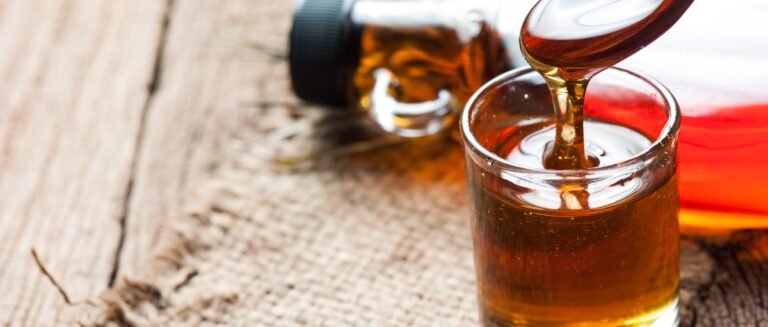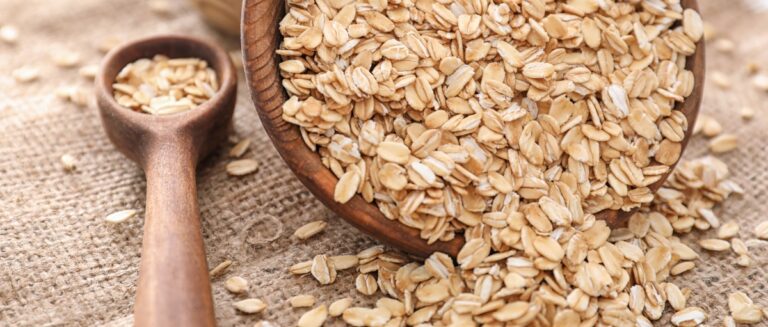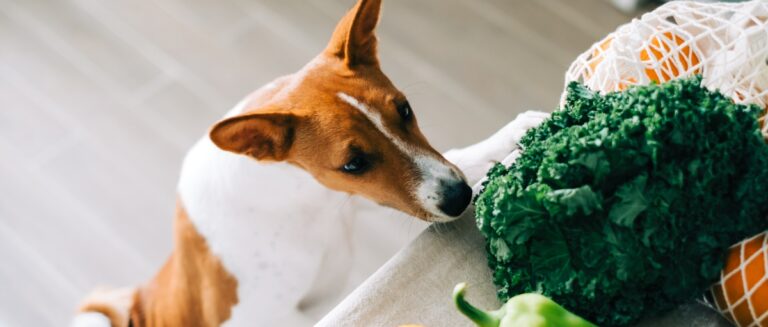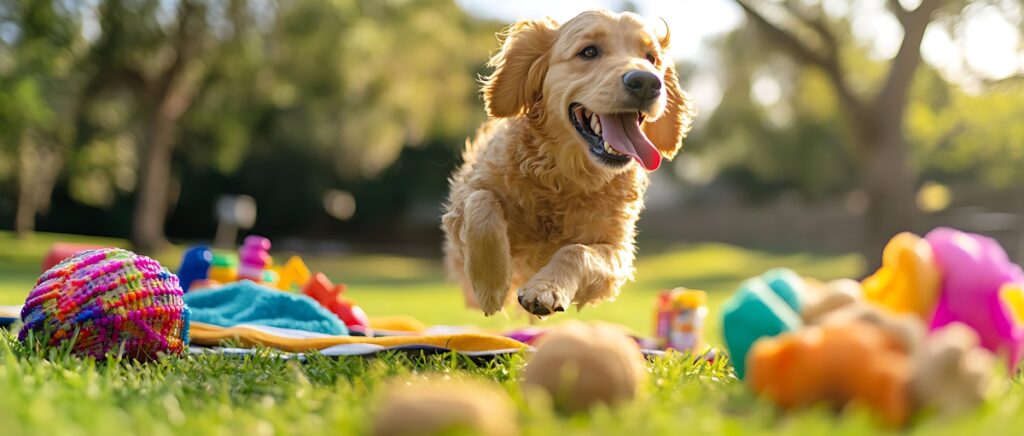If you’ve ever handed your dog a toy that squeaks, you’ve probably seen the reaction right away. Their ears perk up, eyes widen, and tails wag like crazy. What follows? A burst of chewing, pouncing, and squeaking until the squeaker finally breaks or gets pulled out. Game over… at least until the next dog squeaky toy appears.
Sound familiar? It might look like your dog is just goofing around. But there’s real science behind why dogs are drawn to those high-pitched squeaks.
This obsession with squeakers runs deep. It’s linked to your dog’s ancestry and prey drive. The high-pitched squeaky sound mimics the cries of small animals, triggering an instinctive reaction to chase, hunt, and “kill.” Your pet might be pampered, but those ancient instincts still kick in the moment a squeaky toy hits their teeth.
But it’s not just about hunting. Playing with squeaky toys also brings joy and a sense of connection. The sound rewards your dog instantly, keeping them excited and engaged. A dog squeaky toy can even grab your attention quickly—perfect when your dog wants to play on their terms.
So next time your dog goes wild for that squeaky sound, remember: it’s not random. It taps into something primal. And with the right toys, you can turn it into fun, fulfilling playtime.
Why Do Dog Toys Squeak?
In addition to entertainment value, squeaky toys can even support dog training. Their engaging nature helps reinforce basic commands such as “drop it” and “leave it,” making training sessions more effective and enjoyable.
That ear-piercing squeak may be annoying to you, but to your dog, it’s the call of the wild. Squeaky toys tap directly into your dog’s primal instincts as a predator—instincts first honed in their wolf ancestors.
Wolves are stealth hunters who rely on their keen hearing to detect the high-pitched distress calls of small prey, like mice or rabbits. Once they’ve locked onto their target, they use their powerful jaws to grab, shake and ultimately dispatch their quarry.
That series of behaviors is nearly identical to how most dogs react to squeaky toys. The squeaks and whines are very similar in pitch to a distressed animal, which flips the predatory switch in your dog’s brain. Dogs can hear frequencies as high as 100,000 cycles per second, making the squeak more intense. The intensity of the reaction will vary between dog breeds, with hunting and working group dogs like terriers and hounds being the most triggered. But rest assured, the prey-drive instinct lives in all dogs, just waiting to be awakened.
So, what does this mean for you as a dog owner? Far from being a behavior to discourage, engaging your dog’s natural prey drive is actually good for their mental and physical health. Playing with squeaky toys allows your dog to safely act out these deeply wired impulses to stalk, chase, pounce, and “kill.”
Beyond being an energy outlet, this type of play provides:
- Mental stimulation as your dog solves the “puzzle” of the squeak
- Physical exercise that engages different muscles than walking or running
- Bonding time as your dog looks to you to join in the fun
- A positive way to redirect chewing and “killing” behaviors away from off-limits items like shoes or furniture
Of course, not all squeaky playtime has to be a dramatic reenactment of a wolf hunt. But knowing the primal forces that make these toys so irresistible will help you understand dog behaviors and meet their instinctive needs.
Squeaks, Treats, and Doggy Endorphins
For dogs, the joy of squeaky toys isn’t just about their hunting instincts—it’s also about how the sound makes them feel. Every squeak sets off an internal reward system that keeps dogs coming back for more.
When your dog bites down on a squeaky toy and hears that shrill noise, their brain reacts by releasing a cocktail of feel-good hormones, including dopamine. This neurotransmitter is involved in feelings of pleasure, reward, and motivation.
The sudden spike in dopamine generates an excited, emotional response, not unlike what we humans experience when we hear a favorite song or smell a delicious meal. This positive arousal translates into an increased desire to play and interact with the squeaky toy.
And here’s the kicker: the more your dog plays with squeaky toys, the more they learn to associate that specific squeaky sound with the thrill of play. Essentially, the squeaks become a marker of fun, rewarding experiences.
This form of positive reinforcement builds a strong learned association over time, to the point where just the sound of a squeaker can:
- Pique your dog’s interest and get them excited to play
- Encourage vigorous physical engagement with the toy
- Prolong play sessions by maintaining arousal and focus
- Establish squeaky toys as a high-value reward that can be used in training
In short, squeaky toys make play more emotionally and psychologically satisfying for dogs. The unique sound sparks feel-good brain chemicals, marks playtime success, and keeps your pup eager to engage. Not bad for a bit of plastic and some stuffing!
Playtime SOS: Squeaking for Attention
Does your dog ever bring you a squeaky toy and then just stare at you expectantly, maybe even letting out a hopeful whine or two? Congratulations, you’ve just been alerted to your playmate duties!
Dog squeaky toys aren’t just for solo play—they’re also a powerful tool dogs use to get their favorite human’s attention. That shrill, impossible-to-ignore sound is the perfect way for your dog to say, “Hey, I’m ready to play, are you?”
You can think of a toy squeaking like a dog’s version of saying “please.” It’s an invitation to engage and interact. And because dogs are highly social creatures who thrive on quality time with their owners, they learn pretty quickly that a squeaky toy is an excellent way to initiate playtime.
After all, squeaking is tough to brush off. The squeaky sound is designed to grab dogs’ focus and pique their curiosity by mimicking the sound of prey, making it extremely effective for cutting through distractions. Even the most preoccupied dog owner is likely to look up from their phone or book when they hear that telltale squeak.
So if your dog seems to paw at, nibble, or squeak their toys more persistently with you around, they’re probably not just being annoying. Odds are, they’ve learned that the squeaks are the key to unlocking the playtime fun only you can provide.
Of course, like any attention-getting behavior, toy squeaking can become excessive if it’s the only way your dog knows how to ask for interaction. If your pup’s squeaks are constant and demanding, it’s a good idea to work on teaching alternative play-initiation cues, like sitting quietly with the toy or bringing it to you without noise.
Finding Fido’s Perfect Squeaky Match
So, we’ve established why dogs go gaga for squeaky toys. But with so many options lining the pet store shelves, how do you pick the perfect plaything for your pup?
While there’s no one-size-fits-all answer, considering a few key factors can help you find a squeaky toy your dog will love (and that will last more than one play session):
- Size: Choose a toy that’s appropriate for your dog’s size and breed. A toy that’s too small can pose a choking hazard, while one that’s too big can be unwieldy and frustrating to play with.
- Material: Squeaky toys come in a range of materials, from plush to rubber to rope. Consider your dog’s chewing habits and preferences—a power chewer will need a more durable toy than a gentle nibbler.
- Sound: Believe it or not, not all squeakers are created equal! Some have a high-pitched traditional squeak, while others have a lower-pitched grunt or quack. Pay attention to which sounds really rev up your dog, and look for toys that match.
- Safety: Always prioritize toys that are well-made and designed with safety in mind. Avoid toys with small parts that could be chewed off and ingested, and check for any signs of damage or wear before each play session.
- Interests: Does your dog enjoy playing chase and retrieve? A squeaky ball might be their perfect match. Love to cuddle and carry toys around? A soft, plush squeaker could be the ticket. Choosing a toy that aligns with your pup’s natural play style will ensure hours of engagement.
- Rotation: Even the most beloved toy can lose its appeal if it’s the only option day in and day out. Regularly rotating your dog’s toys, including their squeaky favorites, can help maintain interest and excitement over time.
Keeping the Squeaky Fun Safe
Squeaky toys are fun, but safety matters too. To keep things safe and enjoyable, you’ll need to supervise and handle them with care.
The biggest risk with a dog squeaky toy is if your dog swallows the small squeaker inside. This can cause choking or stomach issues. So, always watch your dog during play and check their toys for damage. If a toy has rips, cracks, or stuffing coming out, it’s time to replace it. If your dog pulls out the squeaker, take it away right away before they can swallow it.
You can also use squeaky toys to teach good behavior. For example, practice “drop it” or “leave it” commands. A simple cue helps stop play safely. A toy box can also signal that playtime is over. Most importantly, keep it balanced. Rotate dog toys to prevent boredom or obsession. Give your pup other fun activities too, like walks, dog training, food puzzles, or play sessions.
Embracing the Squeak for a Stronger Bond
At the end of the day, squeaky toys are more than just silly noise-makers. They’re tools for tapping into your dog’s deepest instincts and drives in a way that’s safe, healthy, and fun.
By engaging your dog’s natural desires to hunt, play, and bond with their favorite human, squeaky toys can be a powerful way to enrich their daily life and strengthen your relationship.
So go ahead and embrace the squeak! Use these irresistible toys to get your dog excited, provide mental and physical stimulation, and create special moments of playful connection.
With a better understanding of why squeaky toys are so darn appealing to dogs, you can feel confident that every squeak-filled play session is an opportunity to be a more in-tune, responsive dog owner. One who not only tolerates your pup’s noisy quirks but celebrates them as a natural (and adorable) part of life with dogs.
Sources
Tug-E-Nuff. (n.d.) Why your dog loves squeaky toys. Retrieved from https://us.tug-e-nuff.com/blogs/news/why-your-dog-loves-squeaky-toys
PetSafe. (n.d.) Why dogs destroy squeaker toys. Retrieved from https://www.petsafe.com/blog/why-dogs-destroy-squeaker-toys
Nina Woof. (n.d.) The unexpected benefits of squeaky toys for your dog’s health and happiness. Retrieved from https://ninawoof.com/blogs/blog/the-unexpected-benefits-of-squeaky-toys-for-your-dogs-health-and-happiness
Clare Teaching Dogs. (n.d.) Talking about dopamine. Retrieved from https://www.clareteachingdogs.com/post/talking-about-dopamine
Dogster. (n.d.) My dog swallowed a squeaker. Retrieved from https://www.dogster.com/ask-the-vet/my-dog-swallowed-a-squeaker

